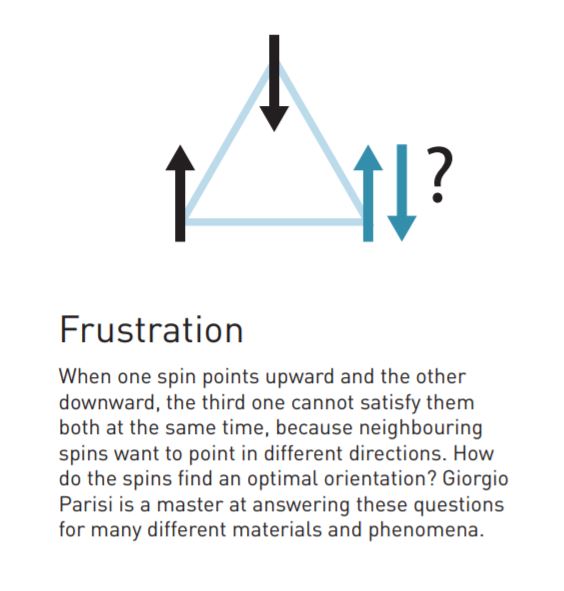In continuation to my previous article 2021 Nobel Prize in Physics – Part 1, we shall here discuss in detail the complex systems whose study fetched Giorgio Parisi one half of the 2021 Nobel prize in Physics. His discoveries of hidden patterns in random complex materials are one of the most influential contributions to the theory of complex systems.
Modern studies of complex systems are ingrained in the statistical mechanics which was the brainchild of scientists James C. Maxwell (famously known for electromagnetism), Ludwig Boltzmann (well known for electromagnetism and thermodynamics), and J. Willard Gibbs (popularly known for thermodynamics). As systems such as gases and liquids began to be studied more, it became necessary that a new method be brought in that would describe these systems in a more structured way, and thus statistical mechanics was introduced.
For systems containing an abundance of particles, the newly introduced method took into account their random movements. Rather than analyzing each particle individually, the core concept lies in calculating the particles’ average effect. An example would be a case in gases where the temperature is not determined by the individualistic property of particles, but it is measured by the average value of the energy of all the particles combined.

Consider the gas particles as tiny balls roaming around whose speed increases as the temperature rises. With decrease in temperature or increase in pressure, these particles condense into a liquid and then to a solid if the temperature is further decreased or more pressure is applied. These particles, when present in the solid state are organized in a regular pattern.
In case of this change happening rapidly, these particles may adopt an irregular pattern which is independent of any further evolution of the liquid system. If this experiment is repeated, the particles may align themselves in a totally new pattern even if the change (decrease in temperature or increase in pressure) happens exactly in the same manner. Giorgio Parisi discovered a hidden pattern in these complex systems, and found a method of describing them mathematically.

He studied a particular type of material called spin glass. In spin glass, atoms have a certain characteristic known as spin; while some atoms want to spin up, the others want to spin down. The type of spin is totally dependent upon the spin of neighboring atoms. However, the system as a whole fails to establish a stable configuration due to the lack of an optimal orientation that can satiate all the atoms.

In one of his books on spin glass, Parisi compared spin glass to Shakespeare’s plays. Let’s say you wish to be friends with two people at the same time, who individually hate each other, this situation can be frustrating. Similarly, if an atom wants to spin up and the other spin down, the third atom cannot satisfy both the atoms at the same time because the neighboring atoms would like to point in some other direction. Spin glass is an example of a frustrated system, where the atoms have difficulty choosing which direction to point.
Parisi made use of a mathematical technique called the replica trick in which multiple copies or replicas of a system are processed at once. In a statistical physical system having quenched disorder, any two states with the same level of disorder are called replicas of each other. In a spin glass, this is analogous to ferromagnetic and antiferromagnetic bonds. Introducing replicas help in performing the average over different individual realizations.
Parisi’s discoveries about spin glass were so profound that they did not only influence physics, but also mathematics, neuroscience, biology, and even machine learning as all these fields have random processes playing decisive roles.
Dealing with questions such as: Why do we have periodically repeating ice ages? How can chaos be more mathematically described? Or how does murmuration happen? All these phenomena begin with simple behavior but in due time give rise to complex collective behaviors present in physical systems ranging from atoms to planetary scales.


